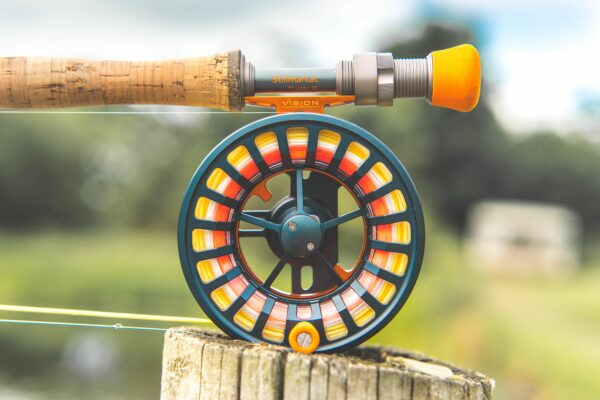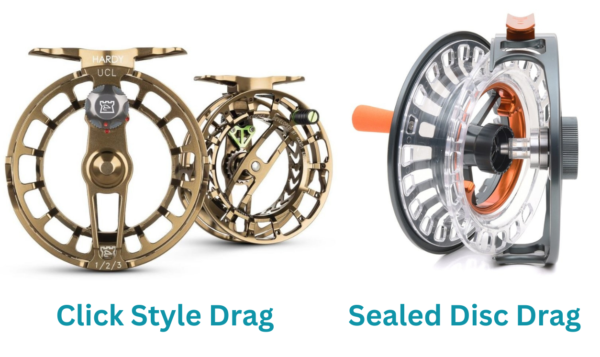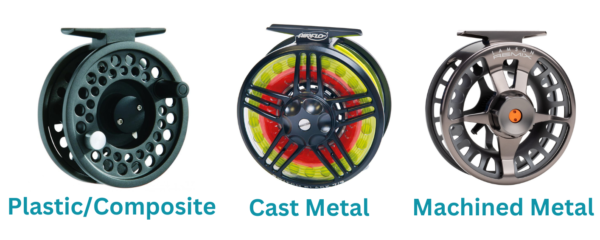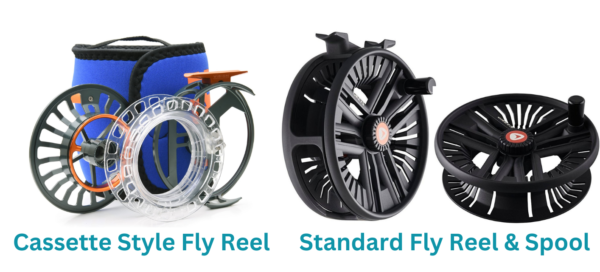When it comes to fly fishing, the right fly reel can make all the difference in your angling experience. Fly reels not only store your fly line but also provide the necessary drag system to control the fight with the fish. In this comprehensive buying guide, we will explore the different aspects to consider when choosing a fly reel, including size, drag system, material, and design. When choosing a fly reel, considering the target species and style of fishing you intend to do is often the first step. Matching the reel size to the line weight of your fly rod and fly line is crucial to provide a balanced set up:

Understanding Fly Reel Sizes:
Fly fishing reels come in various sizes, each suitable for specific fishing scenarios. Let’s take a closer look at the three main reel sizes and their recommended applications:
#3-5 Trout and Grayling Fishing: This reel size is ideal for lightweight freshwater applications, targeting smaller trout and grayling species. It provides a balanced setup for delicate presentations and offers ample backing capacity.
#6-8 Trout Fishing, Light Salmon/Sea Trout: This size range caters to freshwater species like trout, as well as light salmon and sea trout. It offers increased line capacity and drag strength to handle more spirited fights.
#9+ Salmon Fishing, Saltwater and Predator Fly Fishing: For pursuing larger game fish, such as salmon, saltwater species, and predatory fish, a reel in this size range is necessary. These reels possess robust drag systems, ample backing capacity, and the strength to handle intense battles.

Fly Reel Size Comparison – A small click style fly reel, a standard trout sized cassette reel and a large salmon fly reel
Exploring Drag Systems:
The drag system on a fly reel determines how smoothly it can control the line tension during a fight. Here are two primary types of drag systems commonly used in fly reels:
Click Pawl Drag: Ideal for smaller species that don’t possess immense fighting power, the click pawl drag offers simplicity and a nostalgic feel. It provides a constant tension but lacks the adjustability of other drag systems.
Disc Drag: Designed to handle hard-fighting fish, the disc drag system offers precise control over the drag setting. It consists of multiple discs that generate friction to slow down the spool, providing a smooth and reliable drag experience. Some disc drag systems feature conical discs, which increase surface area and enhance stopping power. Carbon disc drags are often regarded as a superior drag system as they are more durable, meaning they don’t wear as quickly, and provide a smooth, constant drag pressure throughout the drag range and under different fishing conditions. When fishing in saltwater a fully sealed drag stem should be used to prevent saltwater ingress and corrosion in the drag system.

Exploring Reel Materials:
The material used in the construction of a fly reel affects its weight, durability, and overall performance. Here are the three common reel materials and their advantages:
Plastic/Composite: Reels made from plastic or composite materials are lightweight, affordable, and resistant to corrosion. They are an excellent choice for beginners or anglers on a budget.
Cast Metal: Cast metal reels strike a balance between weight and durability. They offer enhanced strength and longevity compared to plastic reels, making them suitable for anglers seeking a mid-range option.
Machined Metal: Machined metal reels are crafted from a solid block of metal, resulting in superior strength, precision, and reduced weight. These high-quality reels are often the top choice for experienced anglers due to their durability and smooth performance.

Understanding Reel/Spool Design:
The design of a fly reel affects its line retrieval rate, line capacity, and versatility. Let’s explore the two primary reel/spool designs and the advantages of cassette spool systems:
Large Arbor vs. Standard Arbor: A large arbor reel features a wider spool, enabling quicker line retrieval and reduced line memory. It is an excellent choice for combating larger fish and provides better line control during a fight. Standard arbor reels, on the other hand, can offer increased backing capacity and are suited for lighter freshwater applications.
Cassette vs. Standard Spool: Cassette-style fly reels offer the convenience of interchangeable spools. Anglers can quickly switch between different fly lines, making them ideal for versatile fishing situations. Additionally, cassette spools are affordable, allowing anglers to carry multiple lines without breaking the bank. Standard spools provide simplicity and are suitable for anglers who primarily use a single line.

Conclusion:
Choosing the right fly reel is a vital decision that can greatly impact your fly fishing experience. Consider the size, drag system, material, and design that best align with your target species and fishing style. Remember, a properly sized reel with an appropriate drag system will give you control over hard-fighting fish, while the material and design of the reel will provide durability and versatility on the water. Happy fishing!
Key Points to Remember:
Select a reel size based on your target species and fishing style as well as the line rating of your fly rod
Choose a drag system suitable for the fighting power of the fish you’re targeting.
Consider reel materials such as plastic/composite, cast metal, or machined metal based on your budget and desired durability.
Cassette spool systems offer convenience, affordability, and versatility when it comes to carrying multiple fly lines.
For more information, tips and tactics don’t forget to check out the other articles in our game fishing blog!






